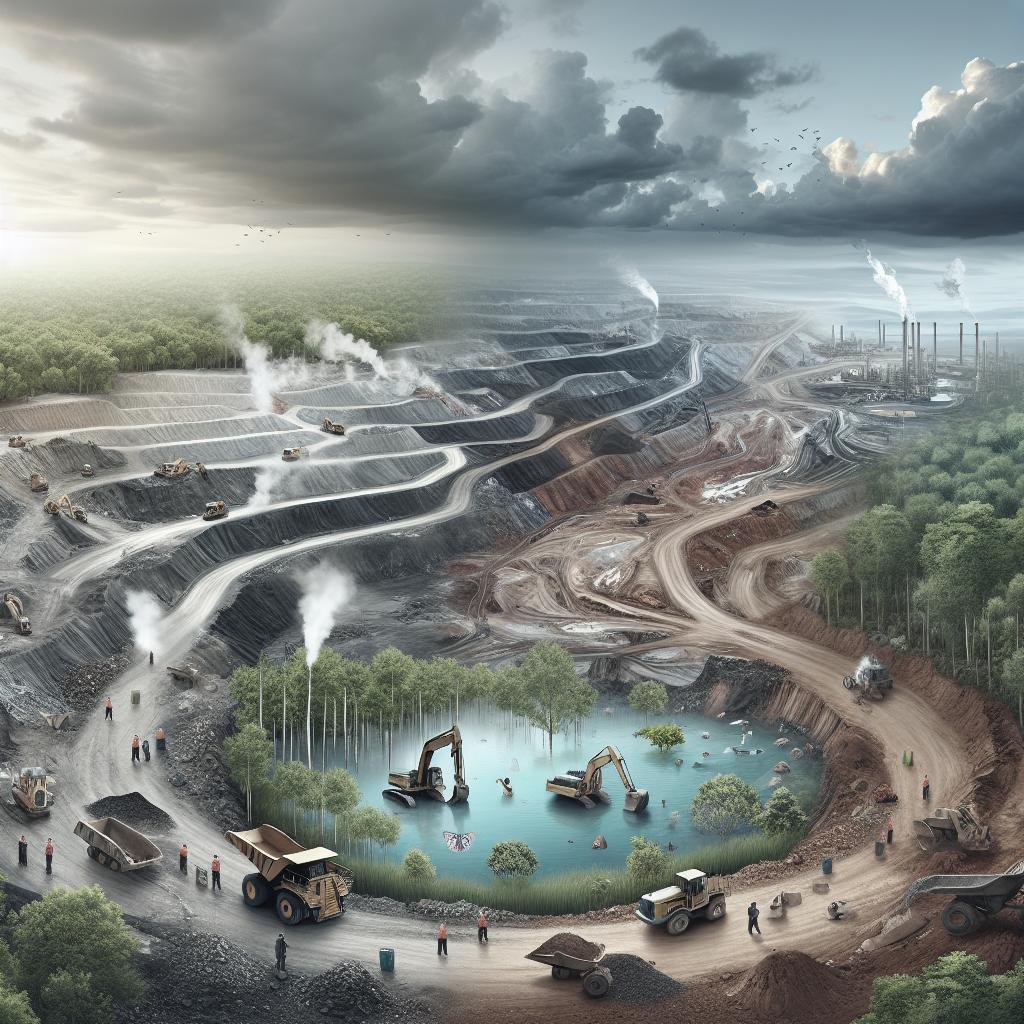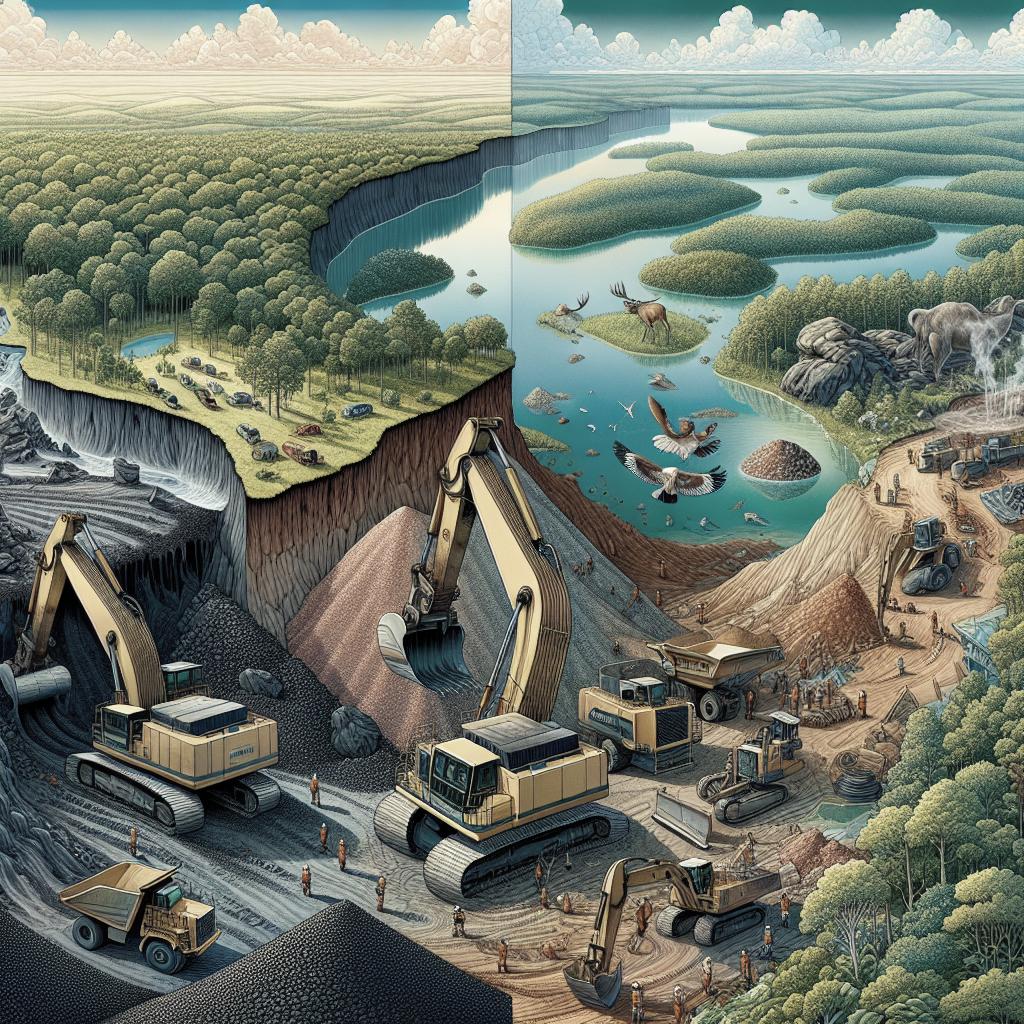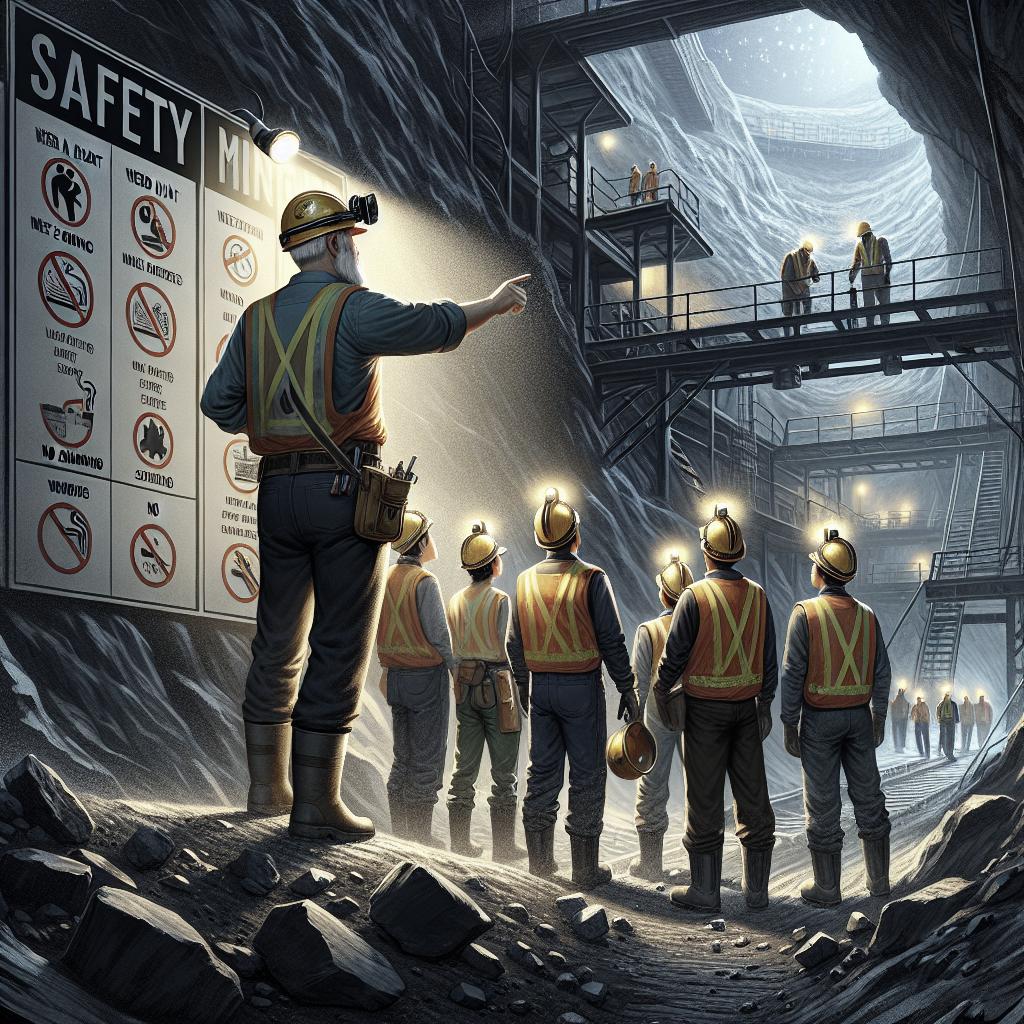<>
“`
Mining, while crucial for our modern lifestyle and infrastructure, poses significant environmental challenges during and after its operations. One vital aspect of minimizing these environmental impacts is the rehabilitation of mining sites. This blog post will delve into effective strategies for mitigating dust risks from tailings storage facilities, considering practical methods and exploring recent technological advancements. Each mitigation technique will be analyzed in detail, highlighting key points to consider for sustainable mining practice. Let’s embark on this journey to see how mining sites can transition from environmental scar to ecological sanctuary.
What Are the Best Ways to Mitigate Dust Risks from Tailings Storage Facilities?
One of the primary environmental hazards of mining operations is dust emissions. Tailings storage facilities, where mining by-products are stored, can become significant sources of dust if not properly managed. Dust mitigation involves several strategic approaches to ensure minimal environmental disruption. Firstly, vegetative cover is one of the most effective methods for dust control. By planting grasses or other suitable vegetation on the surface of tailings, the root systems help to stabilize the soil and reduce wind erosion. This not only minimizes dust but also provides a habitat for wildlife, aiding in the restoration of local ecosystems. Secondly, chemical suppressants can be applied directly to the tailings to bind the particles together and prevent them from becoming airborne. Polymers, chlorides, and other binding agents can hold the dust in place, providing a temporary but immediate solution while longer-term measures like vegetative cover take effect.
1
Water spraying is another time-tested method for dust suppression. Frequent watering of tailings surfaces can help to keep dust particles from being blown away by wind. This approach requires a reliable water source and regular maintenance to be effective. Automated sprinkler systems can be deployed to ensure consistent application, especially in large tailings storage areas. Wind barriers or windbreaks are also highly effective in reducing dust emissions. Erecting physical barriers such as fences, berms, or strategically placed tree lines around tailings storage facilities can significantly diminish wind speeds, hence lowering the chances of dust being lifted into the air. This method provides additional environmental benefits, like promoting flora growth that enhances the overall rehabilitation process. Furthermore, the use of geotextiles or synthetic covers can be employed where vegetation or water is less effective. These materials act as protective layers over the tailings, shielding the particles from direct wind exposure and reducing dust emission. Geotextiles are particularly useful in arid regions where maintaining vegetation might be challenging.
2
Advanced monitoring technologies have also been developed to better manage dust emissions from tailings storage facilities. Installing real-time air quality monitoring systems can help mining operations detect dust levels and act swiftly if they surpass safe thresholds. These systems can be integrated with automated mitigation strategies, like sprinklers or chemical suppressant applicators, to ensure immediate action. Education and training for personnel involved in the rehabilitation process are crucial. Employees need to be well-versed in dust control technologies and methods, understanding the significance of timely and effective measures. Regular staff training ensures that the best practices are implemented consistently and efficiently. Engaging local communities in the rehabilitation process can also be beneficial. Creating awareness about dust risks and mitigation measures helps build a cooperative relationship between mining companies and surrounding populations. Community involvement can sometimes offer innovative solutions and enhance the overall success of the rehabilitation effort.
3
The integration of drone technology has revolutionized tailings management. Drones equipped with sensors and cameras can perform frequent aerial surveys of tailing sites, providing precise data on dust hotspots and areas requiring urgent attention. This data-driven approach allows for more targeted and efficient dust control measures, saving both time and resources. Additionally, drones can assist in the application of dust suppressants, covering large areas quickly and accurately. This reduces the manual effort required and minimizes the exposure of personnel to potentially hazardous conditions. Long-term planning and sustainable practices must be at the core of any rehabilitation strategy. Implementing thorough environmental impact assessments before, during, and after mining operations helps to anticipate challenges and create robust action plans. Continuous monitoring and adaptation to changing conditions are vital for the ongoing success of dust mitigation efforts.
4
Soil amendment techniques can also enhance the effectiveness of vegetative cover. By mixing organic matter or other soil enhancers into the surface layers of the tailings, the soil structure is improved, promoting better plant growth and stability. This method ensures that vegetative cover solutions are more resilient and sustainable over the long term. Re-contouring the landscape of the tailings site to create slopes and terraces can significantly reduce erosion and dust generation. By altering the topography, water runoff is controlled, and wind speeds at the surface level are diminished. This approach combines engineering and natural processes to stabilize tailings and prevent dust emissions effectively. Regular maintenance and monitoring of implemented measures are necessary to ensure their continued success. Dust suppression methods like vegetation or synthetic covers may degrade over time and require restoration. A consistent schedule for checking and renewing these methods helps sustain their efficiency in the long run.
5
Biological methods for dust suppression are an emerging field within mine rehabilitation. Using microorganisms to bind dust particles or promote plant growth offers a novel approach that works in harmony with the environment. Research into bioremediation techniques is ongoing, but early results show promising potential for sustainable dust control. Incorporating renewable energy sources into dust mitigation systems can enhance the sustainability of mining operations. Solar-powered water pumps or wind turbines for automated sprinklers reduce the environmental footprint of these activities, aligning dust control practices with broader ecological goals. Understanding the seasonal and climatic variations of the mining site is crucial for effective dust management. Tailoring dust suppression techniques to specific weather patterns ensures that measures are most effective when dust risks are highest. For example, in dry seasons, more intensive water spraying might be needed, while in rainy periods, monitoring systems can be adjusted to prevent unnecessary application of dust suppressants.
6
Comprehensive rehabilitation plans should also consider the socio-economic aspects of former mining sites. Transforming these areas into community assets, such as parks or agricultural land, can provide lasting benefits and ensure continued maintenance of dust control measures due to community interest and use. Finally, collaboration with environmental experts and organizations can bring additional knowledge and resources to the rehabilitation process. Consulting with ecologists, soil scientists, and environmental engineers can lead to more innovative and effective dust mitigation strategies tailored to the specific conditions of a mining site. Adopting a holistic approach to dust suppression that combines multiple methods and continuously evolves based on monitoring data and environmental feedback ensures the best outcomes in rehabilitating mining sites.
Rate this article
We value your opinion! Please rate this article: (⭐️⭐️⭐️⭐️⭐️)
Thanks for your feedback
Thank you for taking the time to provide feedback. Your input is greatly appreciated and helps us improve our content.
Tell us more
We would love to hear more from you. Is there anything specific you would like to know more about or any other topics you are interested in? Please let us know below.
More articles on Geology
Explore more fascinating articles on topics related to geology and environmental science to broaden your knowledge and stay up to date with the latest trends.
Are you sure you want to delete your contribution?
Are you certain you want to remove your valuable contribution? This action cannot be undone.
Are you sure you want to delete your reply?
Please confirm if you want to delete your reply. This action is irreversible.
Final thoughts
| Method | Details |
|---|---|
| Vegetative Cover | Planting grasses to stabilize soil and reduce wind erosion. |
| Chemical Suppressants | Using binding agents like polymers to hold dust in place. |
| Water Spraying | Frequent watering to keep dust from blowing away. |
| Wind Barriers | Using physical barriers like fences to reduce wind speeds. |
| Geotextiles | Applying synthetic covers to protect dust particles from wind. |
| Drone Technology | Deploying drones for aerial surveys and targeted dust control. |
| Soil Amendment | Improving soil with organic matter to enhance plant growth. |
| Biological Methods | Using microorganisms to bind dust or promote plant growth. |
“`


